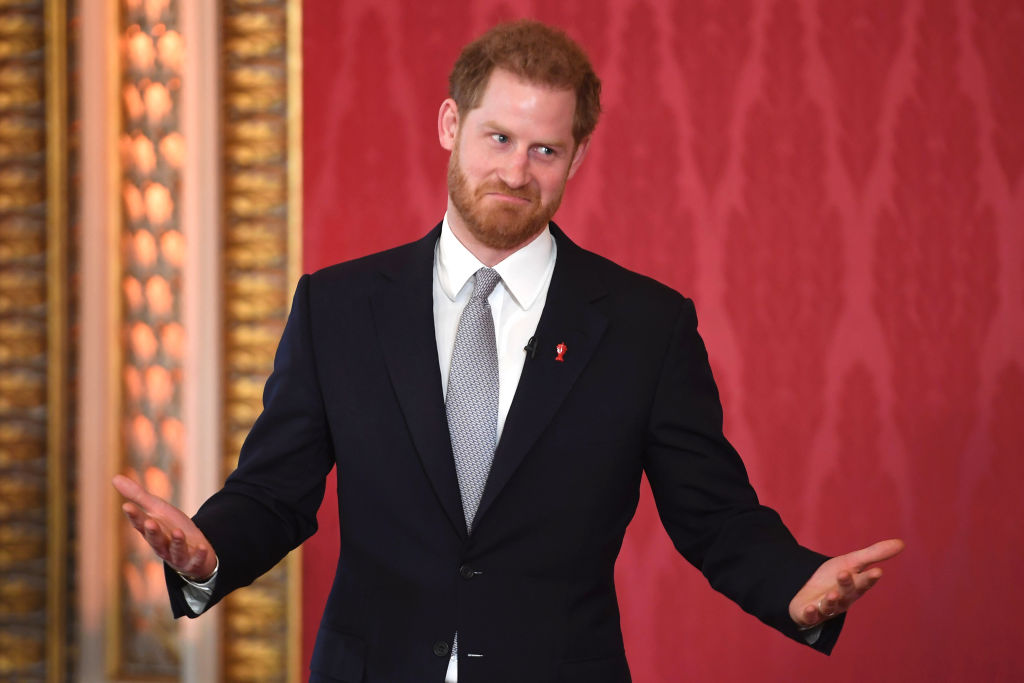What are Prince Harry’s pronouns? The obvious ones, of course, are ‘he/him’, but the mischievous might suggest that ‘heir/spare’ are just as likely. In either case, the Duke of Sussex has struck most of the world as a man who is in touch – if perhaps not through his own volition – with contemporary gender recognition. Therefore, it’s not a vast surprise that the latest charity that he and Meghan have chosen to support is one that has planted its flag in these areas, albeit with a twist.
As with so many things that the Duke and Duchess of Sussex are involved in, there is a gap between commendable intentions and flawed execution
It’s been announced that their podcast Archetypes – where, lest we forget, Meghan interviews exclusively female guests, to ‘explore and subvert the labels that try to hold women back’ – is going to ally with the Global Boyhood Initiative. If this all sounds a tad Baden-Powell, summoning up images of boys and young men running through forests, that is a deeply incorrect way of looking at it. Instead, the GBI exists ‘to promote gender equity by fostering positive masculinity in boys and men.’
Anyone who has been acquainted with the kind of jargon that these institutions spout will find their ears pricking up, cautiously, at the term ‘positive masculinity’, and so it is little surprise that the GBI’s recent report ‘The State of UK Boys’, is not some sort of good-natured, ‘boys will be boys’ indulgence. Instead, the report states that ‘we are gendering our children ever before birth’, that families and schools are ‘gender and heterosexuality “factories”’ and that ‘while the family is a place of nurturing and support for many children, it can also be where gender and sexuality are regulated and policed, as many of our interviewees and much research suggest.’
The solution is simple: rather than inculcate potentially toxic masculinity in children as young as seven, they should instead be taught to ‘explore equitable, inclusive and nonviolent attitudes and behaviours in a safe and comfortable space’ and ‘internalise these new gender attitudes and norms by applying them in their relationships and lives.’
The idea, according to the GBI, is that harmful stereotypes of conventionally masculine behaviour need to be abandoned, and that ‘gendered assumptions’ have to be left behind, in favour of a new, egalitarian partnership between the sexes.
As with so many things that the Duke and Duchess of Sussex are involved in, there is a gap between commendable intentions and flawed execution. For a start, there are inevitable charges of hypocrisy to be raised at the idea of a member of the Royal Family – however semi-detached he currently regards himself – attempting to criticise gender stereotypes. The Royals only recently abandoned rules of primogeniture that would have seen Harry inherit the throne if William had been born a girl. And there is Harry’s own boasting about his military service in Afghanistan, during which time he was firmly committed to the ‘band of brothers’ ethos that has permeated the British armed forces. This is also before we get onto his fisticuffs over a dog bowl with his brother: toxic masculinity at its most bathetic.
As the father of a son, Archie, the Duke also finds himself faced with a dilemma. Should he, as early reports suggested he might, raise Archie (and indeed his sister Lilibet) to be gender-fluid, and allow them to choose their own identity when they are adults? Or should he instead work on the assumption that Archie is indeed going to grow up a man, and devote his efforts instead to passing on the teachings of the GBI, ensuring his son will learn from the wider lessons that he himself was never taught?
In time, we shall undoubtedly find out. But yet again, this eye-catching initiative for Brand Sussex seems designed to capitalise on short-term publicity without being remotely thought through. At least one can’t accuse them of inconsistency.






Comments